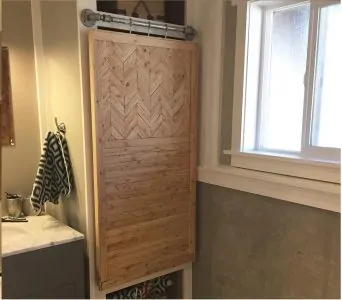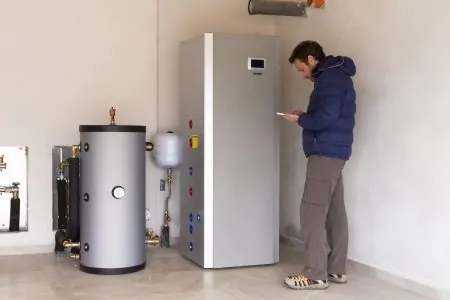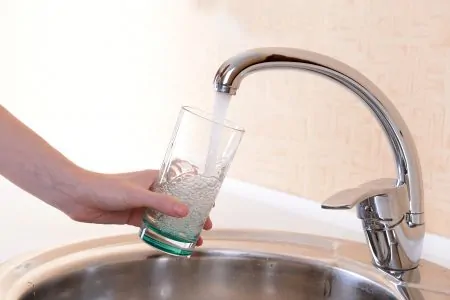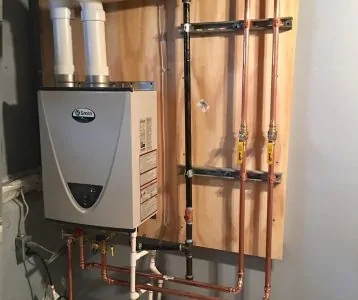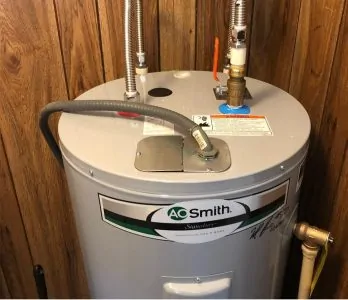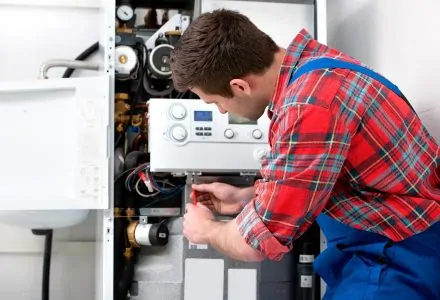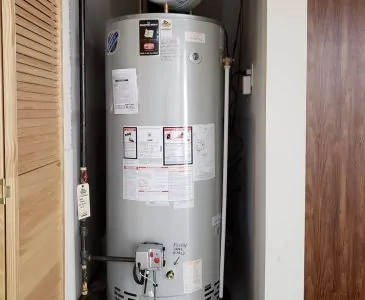Water heaters are an essential part of our homes, providing hot water and warmth. Despite their importance, heaters are often made without aesthetics in mind and might not combine well with the rest of your decor.
In recent years, there has been a greater focus on how heaters look, especially the more compact models that might be installed in your kitchen. In general, however, their appearance hasn’t changed much since the first water heater was created in 1868.
If your indoor heater is an eyesore and you won’t be replacing it any time soon, your best option might be to cover it. In this article, we will take a closer look at how to cover a heater with five DIY water heater cover ideas.
Key Takeaways
- Hide water heaters with curtains, room dividers, pallets, faux cabinets, or plantation shutters.
- Ensure proper clearance and ventilation around the water heater for safety.
- Choose a cover that matches your home’s style and the specific room it’s in.
- Consider the cost, durability, and aesthetics of each cover option before making a decision.
Five Different DIY Water Heater Covers
After a lot of research, we narrowed down our options for how to hide your water heater with style. Here are our choices for the five easiest and most effective solutions.
1. Curtains
- Best in: Unfinished basements or garages used for storage.
- Worst in: Kitchens, finished basements, or bedrooms.
The cheapest and easiest way to conceal your water heater is by using curtains. They are easy to mount and available in countless patterns. If you get tired of the design, you can easily replace them with new ones.
All you need to do is buy and mount a curtain rod that fits the space. Choose a curtain fabric that blends in with the room if you want it to go unnoticed.
Traditional fabric curtains aren’t your only option. Feel free to experiment with different curtain styles (1).
Curtains are a cheap solution but they often stand out in a room. It’s best to use them in a part of the house that is not visited frequently, such as a laundry room, but keep them away from your furnace!
While curtains score low on aesthetics and durability, their affordability makes them a good temporary solution until you figure out what you really want.
2. Room Dividers
- Best in: Unfinished basements or garages used for storage.
- Worst in: Kitchens and bedrooms.
A room divider is a cheap and easy solution to hide your water heater. They come already made so all you need to do is choose the one you want and set it up. Most dividers are imported from Asia and the selection of screens to hide heaters seems endless.
There are a variety of materials to choose from including wood, fabric, and glass. There are also portable, fixed, foldable, or even hanging and roll-up ones.
Glass room dividers look classy, but they aren’t really practical for concealing a water heater.
Room dividers are relatively cheap but you might not want to showcase them. These sit in the middle when it comes to aesthetics and durability, and are only slightly more expensive than curtains.
3. Pallets
- Best in: Basements and garages.
- Worst in: Kitchens and bedrooms.
Pallets have become increasingly popular because they are very versatile. They can be used as tables, shelves, or organizers, but they can also be used to cover a water heater.
Pallets are made of wood, so you will need to use the boards to create your cover. Measure the space you need to conceal, then nail the boards together to create a partition. It will look a bit like a rustic room divider, but cheaper because pallets can be found as free waste material.
You can get creative and paint them, or hang plants or pictures on the outside.
It’s best not to use your pallet screen in the main parts of the house unless you can find a way to make it blend in with existing furniture. Pallets are in the middle of enclosure ideas when it comes to aesthetics and durability and are definitely cheap, if not free.
4. Faux Cabinet or Closet
- Best in: Finished basements, bedrooms, kitchens, or a garage that is also a workspace.
- Worst in: Unfinished basements or garages used only for storage.
Adding a faux cabinet or closet is a popular option because it looks great. If you have an existing structure, such as a closet, an extra door will look natural. No one will assume it is there to hide a water heater.
This solution does require skill if you want to make it yourself. If you like working with wood, give it a go. It is also a more permanent solution compared to curtains or room dividers.
Although it is more costly, it will last as long as your closet or cabinet. This means you can consider a closet door a long-term investment.
Faux cabinets or closets are attractive and upgrade the look of your house, so there’s no need to hide them away. They are perfect if you’re remodeling and want to make a one-time investment.
5. Plantation Shutters
- Best in: Finished basements, bedrooms, kitchens, or a garage that is also a workspace.
- Worst in: Unfinished basements or garages used only for storage.
Plantation shutters are similar to faux cabinets or closets and add a touch of elegance and value to your house. They are another durable and permanent solution.
They can be made of wood, PVC, foamed synthetics, or medium-density fiber.
You can also choose sliding shutters, depending on your preferences and the space you are working with. Custom-made ones are the most popular.
Plantation shutters are pleasant to look at, so it would be a waste to use them in a garage or an unfinished basement.
Like cabinets, plantation shutters look good but cost more. However, they should be worth it if you are remodeling and want to make a one-time investment.
